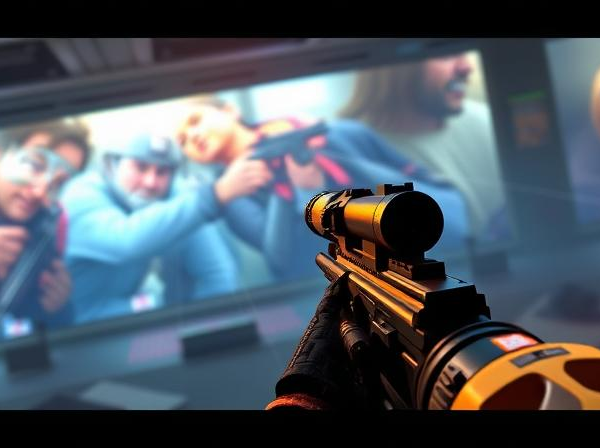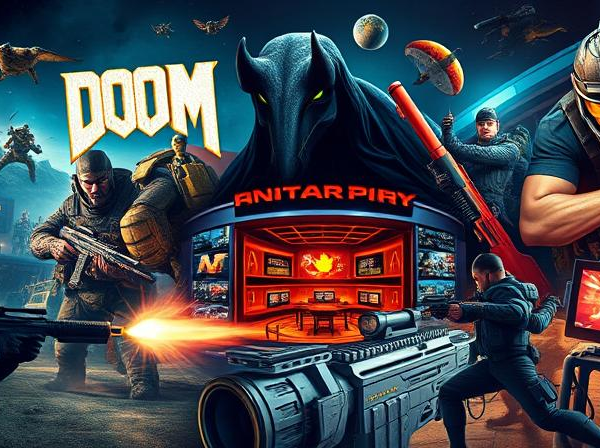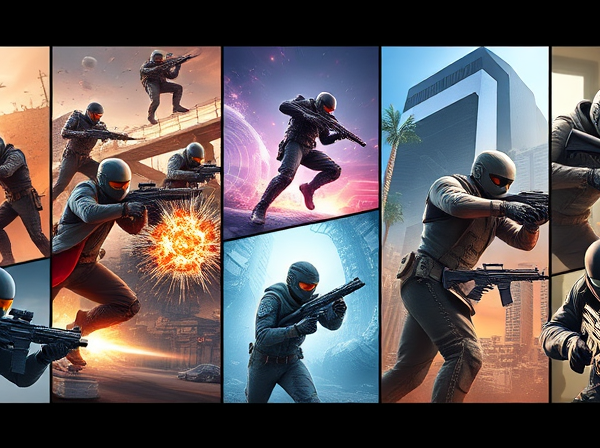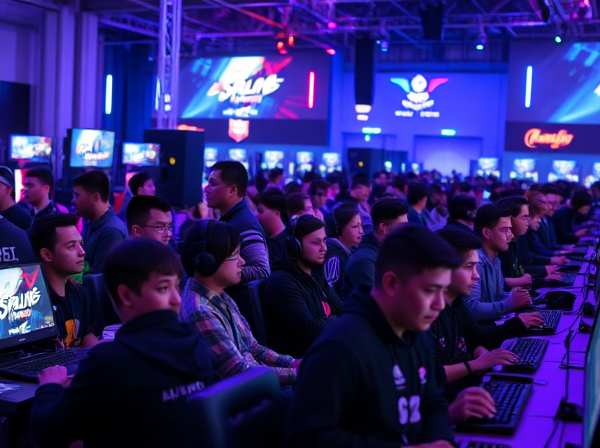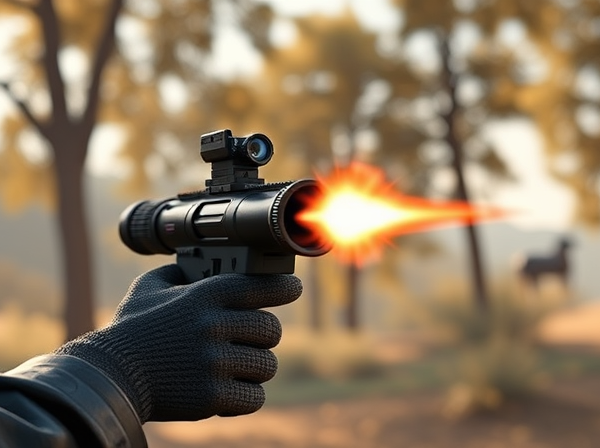Unleashing Your Inner Warrior: FPS Games Explored
The Thrilling World of First-Person Shooter Games

In the thrilling world of first-person shooter games, players are immersed in fast-paced and action-packed virtual environments. These games provide an adrenaline-filled experience as players take on the role of a skilled soldier or warrior, engaging in intense battles and combat scenarios. From navigating treacherous terrains to making split-second decisions, the thrill of FPS games lies in the heart-pumping excitement of being on the frontlines of virtual warfare.
One of the key aspects that make first-person shooter games so thrilling is the realistic and immersive gameplay. With stunning graphics, realistic sound effects, and advanced physics engines, players are transported into a virtual world that feels incredibly lifelike. Whether it’s exploring intricate maps or engaging in intense firefights, the attention to detail in these games creates an immersive experience that keeps players coming back for more. Additionally, the challenging nature of FPS games, with their complex missions and formidable opponents, adds an element of excitement and anticipation, as players constantly strive to improve their skills and overcome new challenges.
Understanding the Essence of First-Person Shooter Games
First-person shooter (FPS) games have become a dominant genre in the world of gaming. These games provide players with an immersive and thrilling experience, placing them directly in the shoes of the main character. The essence of FPS games lies in their perspective, allowing players to view the game world through the eyes of their character. This first-person perspective adds a layer of realism and intensity to the gameplay, creating an adrenaline-pumping experience for the players.
The essence of FPS games is further enhanced by their fast-paced and action-packed nature. These games often involve intense combat scenarios where quick reflexes and accurate aiming are crucial for survival. The gameplay is typically focused on shooting enemies and progressing through levels or missions, which adds an element of challenge and excitement. The heart-pounding moments of facing off against hordes of enemies or engaging in intense firefights are what truly define the essence of FPS games.
Exploring the Evolution of First-Person Shooter Games

Over the years, first-person shooter (FPS) games have evolved significantly, transforming from simple pixelated graphics to breathtakingly realistic visuals that immerse players in virtual worlds like never before. The evolution of FPS games can be attributed to advancements in technology, allowing developers to create more complex and visually stunning gaming experiences. Furthermore, the evolution of FPS games is also influenced by the changing preferences of players, as they constantly seek new challenges and innovative gameplay mechanics.
In the early days of FPS games, titles like Doom and Wolfenstein 3D introduced players to the concept of navigating through a virtual world from a first-person perspective and engaging in fast-paced combat. These games laid the foundation for the FPS genre, setting the stage for future iterations to come. As technology progressed, so did the quality of graphics and gameplay mechanics. From the introduction of multiplayer modes in games like Quake and Unreal Tournament to the inclusion of immersive storytelling in titles like Half-Life and Bioshock, FPS games continued to push the boundaries of what was possible in the gaming industry. The evolution of FPS games also saw the incorporation of realistic physics engines, dynamic environments, and advanced artificial intelligence, creating a more dynamic and engaging gaming experience for players.
The Role of Strategy and Tactics in First-Person Shooter Games
In the exhilarating realm of first-person shooter (FPS) games, strategy and tactics play a crucial role in determining success on the virtual battlefield. While games in this genre often feature fast-paced action and intense combat scenarios, relying solely on reflexes and quick trigger fingers will only take a player so far. To truly excel, one must employ strategy and employ tactical maneuvers to outsmart opponents and achieve victory.
One key aspect of strategy in FPS games is map awareness. Knowing the layout of the virtual environment, including chokepoints, advantageous positions, and potential ambush spots, can give players a significant edge. By carefully studying the terrain and understanding how it affects gameplay dynamics, players can cleverly position themselves to take control of key areas or flank unsuspecting enemies. Additionally, effective communication with teammates is essential for coordinating strategies, such as executing a pincer movement or setting up an ambush. By working as a cohesive unit and synchronizing efforts, players can overwhelm their opponents and secure victory on the digital battlefield.
Mastering the Art of Aim and Accuracy in First-Person Shooter Games

In the world of first-person shooter (FPS) games, mastering the art of aim and accuracy is essential to becoming a formidable player. The ability to swiftly and precisely target opponents can make the difference between victory and defeat. To achieve this level of skill, players must develop a keen eye for detail and hone their reflexes.
One key aspect of mastering aim and accuracy in FPS games is understanding the importance of crosshairs. These small, reticle-like markers on the screen serve as guides for aiming. By aligning the crosshairs with the intended target, players can increase their chances of hitting their mark. However, it is vital to note that different FPS games may have varying crosshair styles and behaviors. Players must familiarize themselves with the specific game they are playing and practice using the crosshairs effectively. Additionally, adjusting the sensitivity of the mouse or controller can help optimize aim and accuracy, as it allows for more controlled and precise movements. With practice and patience, players can gradually develop their aim and accuracy, allowing them to dominate the virtual battlefield.
Unleashing Your Inner Warrior: Psychological Aspects of FPS Games
Unleashing your inner warrior in first-person shooter (FPS) games goes beyond simply mastering the mechanics and strategies. In fact, it delves into the psychological aspects that can greatly influence your gameplay. One of the primary psychological elements at play in FPS games is the adrenaline rush. The fast-paced action, intense combat situations, and constant pressure to perform well create a thrilling environment that triggers the release of adrenaline, leading to increased focus and heightened senses. This heightened state of arousal can significantly enhance your gameplay by improving your reaction time and decision-making abilities.
Furthermore, FPS games also tap into our competitive nature, sparking a desire to outperform others and emerge as the victor. Participating in intense battles and striving for high scores can stimulate a sense of achievement and satisfaction. This competitive aspect not only fuels our motivation to keep playing but also pushes us to improve our skills and strategies. As a result, FPS games can cultivate a healthy competitive mindset, compelling players to constantly push their boundaries and unleash their inner warrior in pursuit of success.
The Importance of Teamwork and Communication in FPS Games

Teamwork and communication are essential elements in successfully playing first-person shooter (FPS) games. These games often require players to work together in order to achieve their objectives. Whether it’s capturing a flag, defending a point, or completing a mission, coordinating with teammates is crucial in maximizing efficiency and effectiveness.
In FPS games, effective communication allows players to strategize, coordinate their movements, and relay important information to their team. This can be done through in-game voice or text chat, as well as through non-verbal cues like map markers or gestures. By communicating effectively, players can share valuable information about enemy positions, tactics, and objectives, which can greatly influence the outcome of a match. Additionally, working as a team can lead to more successful attacks, better defense, and a stronger overall performance. Thus, teamwork and communication go hand in hand, creating an immersive and engaging multiplayer experience.
Exploring Different Game Modes and Maps in First-Person Shooter Games
In the world of first-person shooter (FPS) games, one of the key elements that adds excitement and variety to gameplay is the availability of different game modes and maps. Game modes refer to the different types of gameplay experiences that players can engage in, while maps are the virtual environments where these battles take place. With each mode and map offering unique challenges and objectives, players are given the opportunity to explore different strategies, test their skills, and ultimately enhance their overall gaming experience.
Game modes in FPS games can range from the classic team deathmatch, where players compete against each other to achieve the highest number of kills, to objective-based modes such as capture the flag or assault, where teamwork and coordination are crucial for success. These different modes offer diverse gameplay scenarios that cater to various playstyles and preferences. For example, some players may enjoy the fast-paced and intense action of a deathmatch mode, while others may favor the strategic and tactical elements required in objective-based modes.
Maps, on the other hand, play a significant role in shaping the overall gameplay experience. Each map is designed with its own unique layout, environmental features, and spatial arrangement, providing players with distinct challenges and opportunities. Whether it’s a densely populated urban city, a sprawling desert landscape, or a claustrophobic maze of corridors, each map demands players to adapt their strategies, navigate the terrain efficiently, and make split-second decisions to outmaneuver their opponents. Understanding the intricacies of different maps not only adds depth to the gameplay but also encourages players to think critically and develop new tactics to gain a competitive edge.
In conclusion, the inclusion of various game modes and maps in FPS games is paramount to keeping the gameplay experience fresh, engaging, and immersive. By offering different ways to play and explore virtual environments, these games provide players with endless possibilities for strategic thinking, skill development, and teamwork. With new modes and maps continuously being developed and introduced, the ever-evolving landscape of FPS games never ceases to captivate players and keep them coming back for more.
The Impact of First-Person Shooter Games on Problem-Solving Skills

First-person shooter (FPS) games have often been critiqued for their violent content and negative impact on players. However, recent research suggests that these games can actually have a positive effect on problem-solving skills. In a study conducted by the University of Rochester, researchers found that playing FPS games improved players’ ability to think quickly and make decisions under pressure.
One reason for this improved problem-solving ability is that FPS games require players to analyze complex situations and come up with effective strategies. For example, players may need to assess the best route to take in order to flank an enemy or prioritize targets in a high-intensity firefight. These games also often involve solving puzzles or deciphering codes to progress through the storyline. As players engage in these challenging tasks, they develop their critical thinking and problem-solving skills, which can be applied to real-life situations outside of gaming.
Enhancing Reflexes and Hand-Eye Coordination through FPS Games
First-person shooter (FPS) games have long been recognized for their potential to enhance reflexes and hand-eye coordination. The fast-paced nature of these games requires players to quickly react to stimuli and make split-second decisions. Whether it’s aiming at an opponent, dodging incoming attacks, or maneuvering through complex environments, FPS games demand precise control and swift reflexes. As players engage in intense combat scenarios, they naturally develop a heightened sense of awareness and a sharper ability to react swiftly and accurately.
Moreover, FPS games heavily rely on hand-eye coordination for success. The seamless coordination between the player’s visual perception and physical movements is crucial in targeting enemies and executing precise actions. With every shot taken or every movement performed, the player’s eyes must swiftly communicate with their hands to achieve the desired outcome. This constant synchronization between the visual and motor systems not only enhances hand-eye coordination but also trains the mind to process information quickly and execute actions with precision. Overall, by engaging in FPS games, players have the opportunity to improve their reflexes and hand-eye coordination, skills that can benefit them not only in the virtual world but also in real-life situations that demand quick reactions and precise movements.


